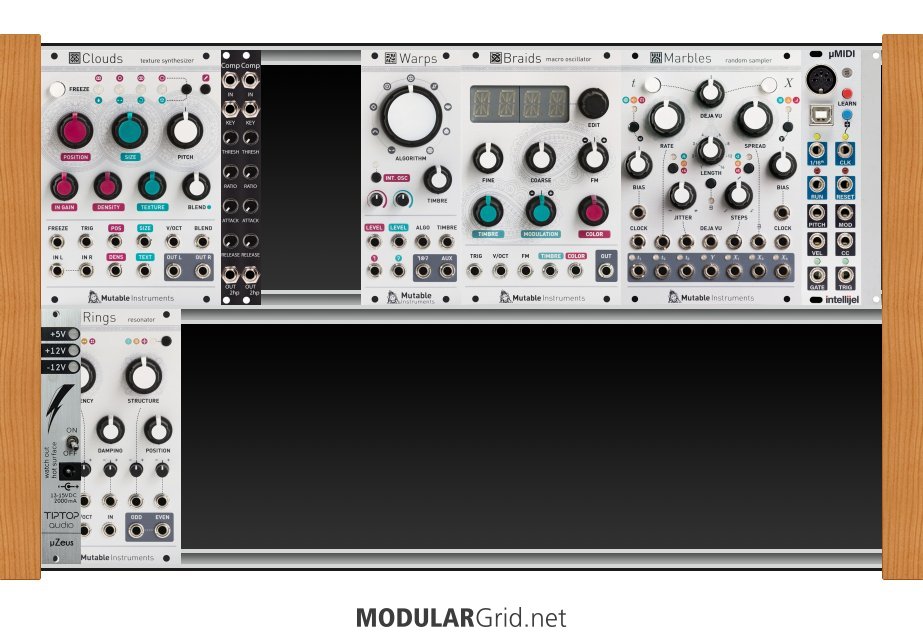This is a rather smallish build, for starters. In addition to the above advice, I would add that you should try for maximum functional density. If there's a 20 hp module whose functions could be found in 16 hp, then go for the smaller size. If you find a VCO module that has two VCOs in the same panel space that currently houses one, then go for the two. As noted, Clouds, Braids, and Z-DSP are all either discontinued or superceded, so you can start by yanking those out if you don't have them already. But here's an example of what I'm talking about...
A Braids module occupies 16 hp of space. Mutable's upgraded version is the Plaits, which fits into 12 hp. But if you look at Codex Modulex's "shrunk" third-party versions of the Braids and Plaits (their uOsc-I and uOsc-II respectively), you'll notice that these are 8 hp, so this means you can effectively fit two of these (or one of each) into the space the Braids currently fits in and, in the process, double your oscillator compliment. Similarly, while Intellijel's uMIDI occupies 6 hp, it only gives you one channel of voice CV/gates. But if you went up 2 more hp, this allows you to use an Expert Sleepers FH-2, which gives you eight assignable CV/gate outputs and two inputs so that you could use clocking on the modular to control DAW tempi, allow a CV to change parameters in the DAW, and so on. Plus, you can expand it if needed, and it has a lot of functions the uMIDI doesn't but which you'll probably find useful.
A couple of other things to consider: first of all, if you're tempted to add mults, don't. Use inline mult devices or stackcables instead of losing functional HP to multiples. Second, if you can find a powered cab to use instead of one that requires the power supply to be placed on the patchpanel, go with that and free up four more hp. Lastly, consider what you're missing here, VCAs being the obvious one. Sure, they're not sexy...but they're essential as they allow level control for both audio AND modulation/CV. Perhaps look at a case with a 1U tile row? Intelljel has these, but they're formatted for their special tile format. Or you could simply try putting everything in a bigger 3U cab...many of us tend to recommend "going big" while doing initial builds on MG, then paring things down from that. Case in point (pun intended), have a look here: https://www.ericasynths.lv/shop/enclosures/studio/2x126hp-monster-case-140mm-deep/ Now, this is not only powered, it also has a depth that will allow pretty much anything to be mounted in it, and if/when you're ready to enlarge your system, you can add a second one of these with Erica's dual-case sidepanels and still have everything in one handy unit.
There's LOTS of options here; don't try and get everything right in your first build, because no one ever does. Use MG as the modular building sandbox that it is, and work out possibilities to the point where you're sure there's no more possibilities to work out...THEN spend the money, as you'll be spending it a lot more sensibly that way!


